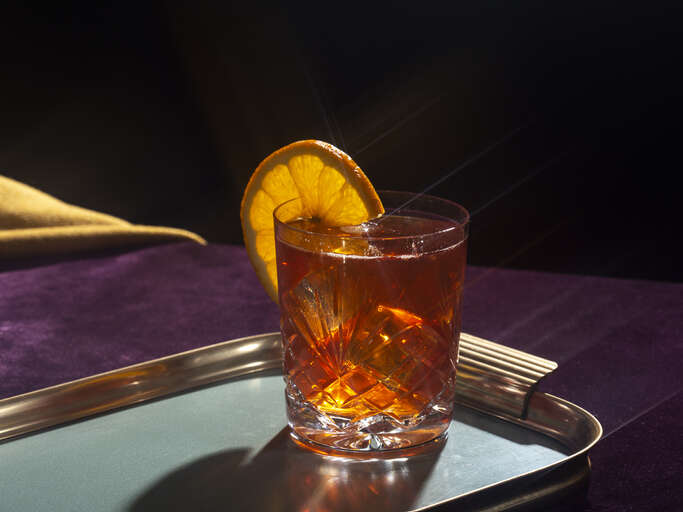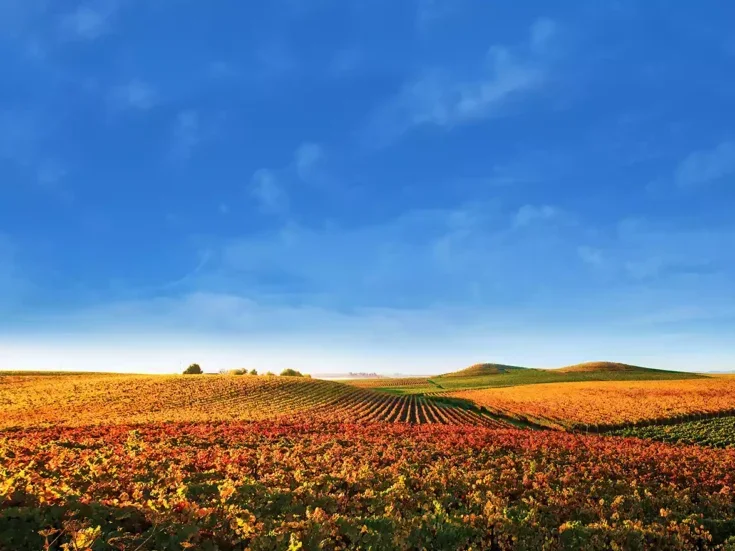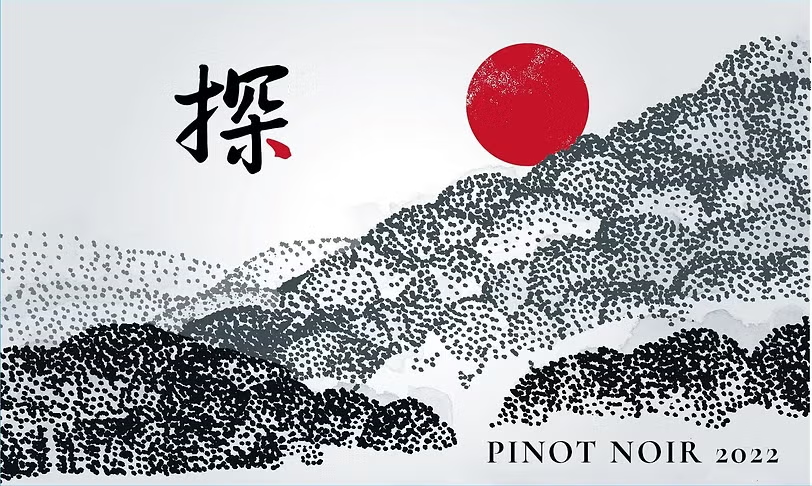
From traditional styles with secret recipes, to modern bottlings in which the wine is the star, vermouth is more diverse, and popular, that it has been in years, says Margaret Rand, as she explores some of her favorite brands.
This was going to be a far more orderly piece than it is. I was going to select one vermouth from half-a-dozen countries and put them in context.
But then somebody recommended this, and that turned up, and this company wouldn’t answer emails, and that company had lots to say—and well, here we are. It’s all a bit amorphous. So, let me just say, with Rupert Brooke, These I have loved.
Vermouth: One real division
Vermouth itself is a bit amorphous these days. It follows few rules and is all the better for it. The only real division seems to be between those vermouths made in the traditional model—DOP if they’re from Torino or AOP if from Chambéry—which are all about the (generally secret) blend of botanicals, and those from winemakers.
The latter consciously use decent wine and want to show it off—sometimes to the detriment of anything else. They are about the wine in a way that traditional vermouths are not; they also celebrate their botanicals in exuberantly sensual lists of exotica and locally foraged weeds, herbs, and flowers. Think of John Masefield’s “Cargoes,” bottled:
“Quinquireme of Nineveh from distant Ophir,
Rowing home to haven in sunny Palestine,
With a cargo of ivory,
And apes and peacocks,
Sandalwood, cedarwood, and sweet white wine.”
The new vermouths are also deliberately tilting their flavors in one direction or another, sometimes to complement a particular gin—because there’s another drink that has gone very amorphous indeed.
Vermouth: How bitter-sweet?
Historically, of course, vermouth wasn’t about either the wine or about the gin: It was medicinal. The instinct to macerate things in alcohol is probably as old as alcohol—which does not, on its own, taste especially nice.
Ancient China, India, Greece, and Rome all had medicinal drinks made in this way; and not just medicinal. Wine could be preserved, or its decay disguised, by the addition of herbs or spices or resins.
Wormwood (Artemisia absinthium) gives vermouth its name (via German wermut), and that bitterness should be, you would think, the basis of anything that calls itself vermouth.
Sometimes it is and sometimes it isn’t. The most interesting winemaker vermouths do have a core of bitterness, though it might not be from wormwood if they are focusing on using local botanicals; but other ingredients can be bitter, too.
Scarpa (DOP Torino) has wormwood, “the non-hallucinogenic part,” adds Michael Palij MW of UK agent Winetraders, but a lot of gentian, too, which gives texture, he reckons.

Over in New York State, wormwood can be a bit of a problem, says James Christopher Tracy of Channing Daughters, which makes a series of seasonal vermouths based on local botanicals.
“We rather avoid artemisas. Absinthium is regulated here, though Artemisia vulgaris, or mugwort, is not. We don’t have gentian here. There’s birch bark in some, and sage has bitterness, too.”
As an aside, he says that sage contains more thujone, which is the psychotropic bit of wormwood, than wormwood does. It is a slightly different form of thujone, however, and the US government agency that regulated ingredients down to the last gram need not take fright.
“We’re not using just leaves,” says Tracy of their ingredients in general, “we’re using whole branches and roots, for flavor and texture.”
Asterley, in London, uses English ingredients: Hops, burdock, chickweed, milk thistle, and others.
How do you make a different vermouth?
Which makes one wonder: How do you make a vermouth that is different to every other vermouth? Why do you have to? counters Michael Palij.
“Most Champagnes taste exactly the same. People buy into a brand.”
But then he tells me exactly what makes Scarpa different from any other vermouth: The white Extra Dry uses Cortese as base wine, and is unfiltered, so slightly cloudy.
“Many vermouths are made using flavoring essences,” he says. “If you think about how you create an essence—if you’re making orange essence, the high-quality way is to macerate oranges in spirit, or distill them—there are different methods of extraction.
“The other way is to use something that smells and tastes of oranges but is made in a laboratory. Cheaper vermouths use cheap blending wine, add rectified concentrated grape must, and go. I was looking at sugar, base wine, spirit, then the Colonel Sanders stuff.
“All our botanicals are ground in a giant grinder, extracted at ambient temperature, pumped over 24/7 for 30 days, and longer in winter.”
The recipe is from the Scarpa family’s original recipe, with the Extra Dry tweaked to increase the bitterness—more gentian, in other words.
This was to complement Smeaton’s gin, which Palij also handles, and which is juniper-heavy and orange-heavy.
“So, I didn’t want more orange in the vermouth… You have to benchmark it against something, so it might as well be against our own gin. It works with lots of gins, but the bitterness lifts Smeaton’s.”
Herbal complexity
The bitterness, in fact, is powerfully reminiscent of the amazing cough mixture I had as a child. The recipe was more secret than any drinks brand (my father, a veterinary surgeon, had it made up, and I suspect that it contained ingredients that might well be considered questionable now), but its bitter herbal complexity is now my benchmark for good vermouth.

I wish I still had some, to do a comparison. But “cough mixture” in a tasting note is my ultimate accolade.
But onwards! Mark Driver of Rathfinny, high on the Sussex South Downs, has his own gin, too. It’s called Seven Sisters, after the nearby chalk cliffs that tower over the English Channel, and he started making it in 2016.
The gin is a blend of final pressings from Rathfinny grapes distilled (by Silent Pool, in a pot still) and blended with grain spirit, and popular, pre-Covid, with the Sussex Coast locals. (For those who don’t know the region, nearby Brighton is hipster central).
On the back of that came a Pinot Gris-based vermouth with lemon verbena and orange flavors, steely, with underlying bitterness.
“For the vermouth, we talked to Declan McGurk, who then ran the American Bar at the Savoy, and Joe Harper, who then ran the Beaufort Bar at the Savoy, and they came up with an incredible blend: Wormwood, grapefruit, bitter orange, artichoke, angelica…”
Wormwood is the key, and the botanicals are imported. Driver, however, would have had less bitterness; it was the need of bars for bitterness, for things that work in cocktails, that carried the day.
“But we kept the citrus in. It’s crowd-pleasing; you can drink it by itself or with our gin.”
I should say here that I tasted all these vermouths on their own, except for Rathfinny, which I tasted with Seven Sisters gin. This was probably a very unjust thing to do, given that vermouths are primarily made for cocktails—but honestly, the complications of mixing this gin or that, this tonic or that, these bitters or that, got the better of me.
Forgive me. You can make your own negronis at home—which people did a lot during lockdown, reckons Dawn Davies MW, head buyer of Speciality Drinks.
“Campari has sold at the same rate as red vermouth, which shows,” she says. “People are getting more adventurous,” she adds, “and vermouth has been getting better for ten or 15 years.”
She also cautions that now that the wine is better, “some wine producers making vermouth don’t understand it. They don’t have enough bitterness, and it’s too sweet—the Spanish ones in particular.”
It’s true: Barbadillo’s Ataman Vermut is one of the better Spanish ones, and it has threads of bitterness in a palate that is mostly about flavors of mocha and oranges.
The wine is good—Manzanilla and Oloroso—and the botanicals include seville orange peel, rosemary, elderberry, wormwood, cassia bark, and quinine, and it’s close to the original Ataman vermouth that Barbadillo used to sell up until the 1960s. They kept a few casks even after they stopped selling it, simply because the workers kept topping them up with Oloroso.
“The management had no idea it was there,” says Tim Holt of Barbadillo. The new vermouth contains a bit from those old casks, and they’re creating a solera system for it.
Ancient and modern
There’s a long tradition, in drinks, of rediscovering ancient recipes, dusty old barrels and the like: Rob Asterley from Asterley Bros says his wife’s grandfather had a notebook with a recipe for amaro which he made for friends and family, but when Rob decided to turn it into vermouth he got the wine from Gusbourne and dipped into 17th-century Culpeper herbals for ingredients—hops, chicory, rose, lavender, chamomile, jasmine, yarrow, and chickweed.
Badenhorst’s Caperitif—“mentioned by name in the Savoy Cocktail Book,” says Adi Badenhorst—was a classic of the 1920s and 1930s.
“They stopped making it in the 1940s, and we heard about it five or six years ago. My partner suggested making it: I’d never drunk a vermouth before. We came up with our own version, strongly influenced by fynbos vegetation in the mountains of the Cape.”
They found some original bottles, too, at auction in Sheffield, England. “I doubt they would have used fynbos then,” says Badenhorst. “It would have been quite simple probably—fruit-based, with one or two spices. It wouldn’t have tasted much like ours.”
Theirs is based on Chenin Blanc and Muscat de Frontignan, with up to 47 plants infused in spirit. “Before bottling we blend back 20 percent of the older blend in a solera system of batches, and all batches are different; all are fresh and seasonal.”
The mountain nearby, the source of the botanicals, has 1,280 species, 88 of which are, says Badenhorst, found only on that mountain. They don’t use more than 18 or 19 species, though, all of which have long been used as medicinal plants.
“You can buy dried versions in the markets here; we’re drawing on 50,000 years of knowledge of indigenous herbs and medicines.”
There are people there who pick these herbs for a living. They’re “the mountain men of the Cape. They dress in sacks and dreadlocks and they pick medicinal plants for a living.”
With these are mixed some common spices like cinnamon, nutmeg, and cardamom. “We experimented in the kitchen and came up with a recipe we sort of stick to.”
And it’s delicious: Soft, mellow, winey, with huge depth of flavor, and it goes a treat with spicy food. Is one allowed to drink vermouth neat with food? It is usually more successful than sweet wines with hot, spicy food—and believe me, I’ve tasted a lot of sweet wines with food over the years from producers trying to boost sales.
Though the makers of Sauternes and the like might not be happy with the idea that it might go with more dishes if they put wormwood and gentian in it.
A far cry from lockdown negroni
How far Caperitif, or any modern vermouth, resembles the vermouths of the past, is difficult to say. EM Forster published Where Angels Fear to Tread in 1905, and in the fictional town of Monteriano, near Siena, Gino and Spiridione sit in the Caffè Garibaldi (there’s always one of those) and have “vermouth and little cakes with sugar on the top…. And though vermouth is barely alcoholic, Spiridione drenched his with soda-water to be sure that it should not get into his head.”
It sounds a far cry from a lockdown negroni.
What, then, of Channing Daughters’ six “local, seasonal, aromatized wines,” which are called vermouth because they had to be called something?
Says James Christopher Tracy, “I was more influenced by Hippocratic wine than 19th-century vermouth. You can do something like an Italian or French vermouth of the 1800s or take a local approach.”
In 2004, they started making a skin-fermented white wine and started researching all the things that had been put into wine over the years. They settled on ingredients grown or foraged within 8–10 miles (13–16km) of the winery: black birch, dandelions, rosemary, lemon balm, beets, arugula, cucumber (“cucumber makes one fierce pickle”)—30 to 45 in all, of which 15 are common to all six vermouths.
There’s a spring expression, made in May and early June; two summer ones, made in late June and early July; two late summer ones, made in late August and September, and an autumn one, made in October and November.
The base wines are Sauvignon Blanc, or Gewürztraminer or Muscat, or the skin-fermented white, or a blend of reds, and they’re all bone-dry. Sweetening (to dry) is with honey. “Dolin is the driest we have in the US,” says Tracy, “and it has 1.4oz (39g) of sugar. Ours have 0.1oz (4g) up to 0.7oz (20g.)”
The flavors? Complex, fascinating. My winey palate kept picking up turmeric, incense, roses, citrus, cranberry, damsons, pears—none of which were necessarily actually there. Just as the flavors of the grape and of fermentation and aging combine into flavors of graphite or peach or salt in wine, so the flavors of vermouth are a combination of ingredients and processes that produce entirely new impressions. At least, that’s my excuse.
Some don’t get that far from wine. Regal Rogue, for example, from Intrepid Spirits in Sydney, uses native Australian botanicals and unwooded Chardonnay; it’s wine-dominated, with citrus and herbal flavors.
Belsazar Summer Riesling Edition uses Riesling from Dr Loosen and has gentle pineapple and peach flavors in a fruit-cup sort of way.
Whites tend to have a lot less bitterness than reds, it’s true, and if you want real bitterness there is Otto’s Athens vermouth, with rose and myrrh notes, mouthwatering and complex.
Or, from Torino, there is Cocchi, cocoa-ish and refined. Or Baldoria Rosso, which starts off a bit toffee-ish and then turns to incense and sandalwood, wonderfully aromatic and individual.
Or Dolin Vermouth de Chambery: Delicate, subtle, herbal. There are many good versions of traditional vermouth. But who wouldn’t fall for fynbos, if fynbos is on offer?






